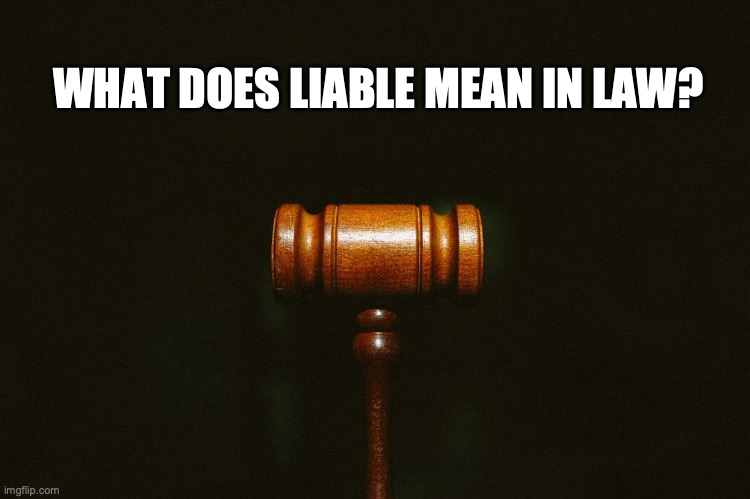As we navigate through life, we’re continually confronted with countless legal terms that shape our understanding of law and its implications. One such term is “liable”. So, what does liable mean in law?
This article provides clarity on legal liability, its definition, implications, and various forms it can take.
Defining Liability in Law
Liability, in the simplest of terms, refers to the legal responsibility that one party holds towards another due to an act of harm or negligence. This responsibility, when legally established, obligates the liable party to compensate the victim for any damages incurred.
The victim could be an individual, a group of individuals, or even a business entity.
Liability is a fundamental concept within the legal system. It functions as the foundation for numerous legal actions, such as lawsuits for breach of contract, personal injury cases, and negligence claims.
It’s essential to understand that liability isn’t established arbitrarily; there are specific legal processes and standards that determine when and how a party becomes liable.
For a better understanding, read “Liable vs Guilty” to learn the differences.
The Components of Legal Liability
There are three primary types of legal liability: intentional torts, unintentional acts or negligence, and contractual liability. Each of these types has its unique characteristics, implications, and conditions under which they arise.
Intentional Torts
Intentional torts are wrongful acts committed deliberately. These could include assault, battery, defamation, fraud, and false imprisonment, among others. The victim of an intentional tort can bring a civil lawsuit against the perpetrator, seeking financial compensation for damages experienced.
In such cases, the court must validate the perpetrator’s intent to cause harm, as well as the damages incurred by the victim. It’s important to note that in certain jurisdictions, punitive damages may also be awarded as a form of punishment for intentional torts.
Negligence or Unintentional Torts
Negligence, or unintentional torts, refers to harms caused due to carelessness or lack of reasonable care. These are the most common forms of civil liability.
Proving negligence typically involves establishing four key elements:
- the defendant’s duty of care
- a breach of that duty
- causation linking the breach to the harm
- actual harm or damages.
Negligence cases can further be categorized into slight negligence, gross negligence, and criminal negligence. These categories differ based on the degree of carelessness exhibited and the potential penalties faced by the negligent party.
Contractual Liability
Contractual liability arises when a party fails to fulfill the obligations outlined in a contract. This could be a written or oral agreement, and the breach of contractual terms can result in the offending party being held legally liable for any resulting damages.
The damages in such cases are typically compensatory, aiming to restore the injured party to the position they would have been in had the breach not occurred.
When Does Liability Attach?
Legal liability is not a concept limited to theory. It carries real-world implications, with the liable party bearing the weight of financial responsibility for the harm caused. But when exactly does liability attach?
Essentially, a party becomes legally liable when they lose a civil court case, and the court determines they owe the victim compensation. This requirement to pay is triggered by either a court order or a settlement agreement.
Protecting Yourself from Legal Liability
Given the potential financial implications, it’s crucial to safeguard oneself against legal liability. This is where insurance comes into play. Insurance policies can provide coverage for both intentional and unintentional torts, covering legal fees, compensatory damages, and sometimes even punitive damages.
It’s always a good idea to consult with an insurance professional to understand the risks and determine the coverage that best fits your needs.
Liability Extends Beyond Simple Definition
Understanding what liable means in law is much more than a simple definition. It’s about comprehending the intricate web of responsibilities we hold towards others in our society and the potential consequences of failing to meet those responsibilities.
Whether intentional or unintentional, acts that cause harm to others can lead to legal liability, with implications that extend beyond the immediate harm caused.
The concept of liability is deeply intertwined with our legal system, shaping our understanding of justice and fairness. Knowing nuances of liability, we equip ourselves with the knowledge needed to navigate the complex world of law responsibly and effectively.

